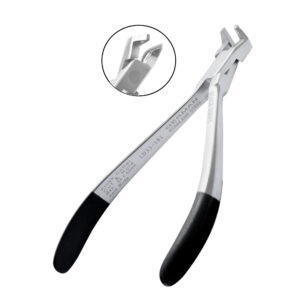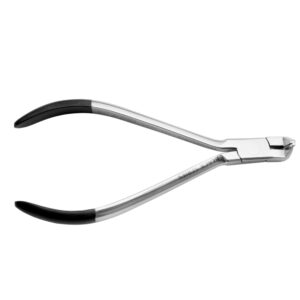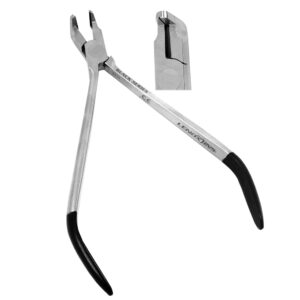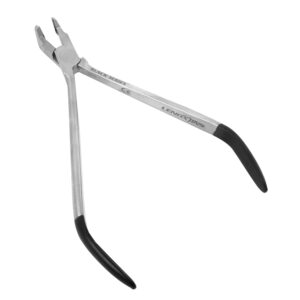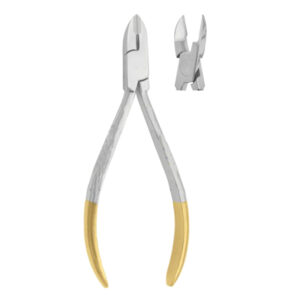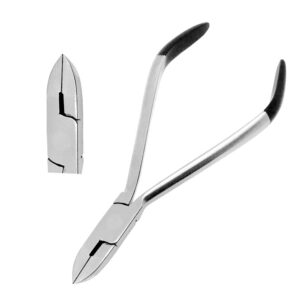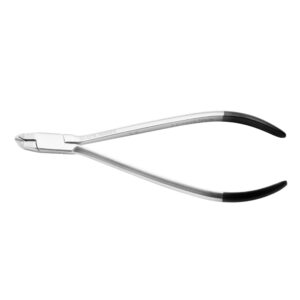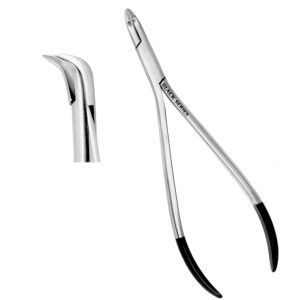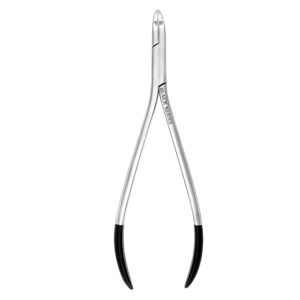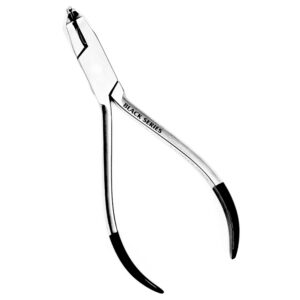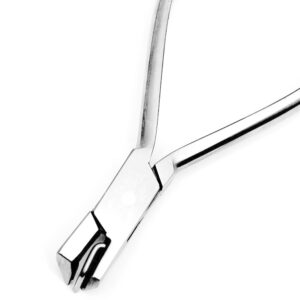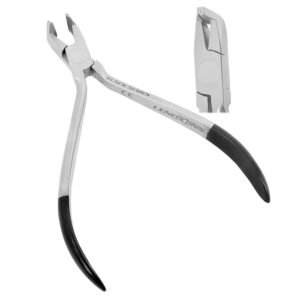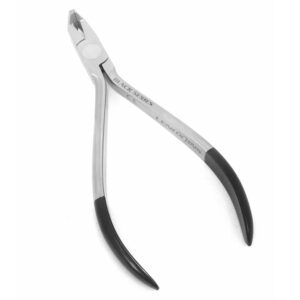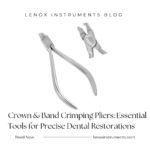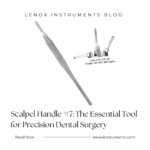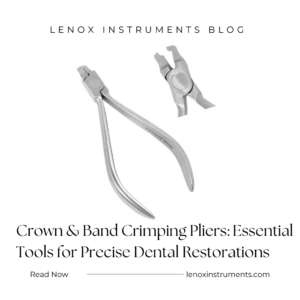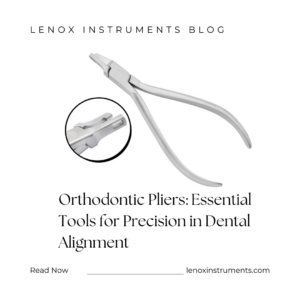Distal End Cutter With Hold, Long Handle: Precision Instrument for Orthodontic and Dental Procedures
- LENOX INC CANADA
- October 4, 2024
- Cutter, Orthodontics
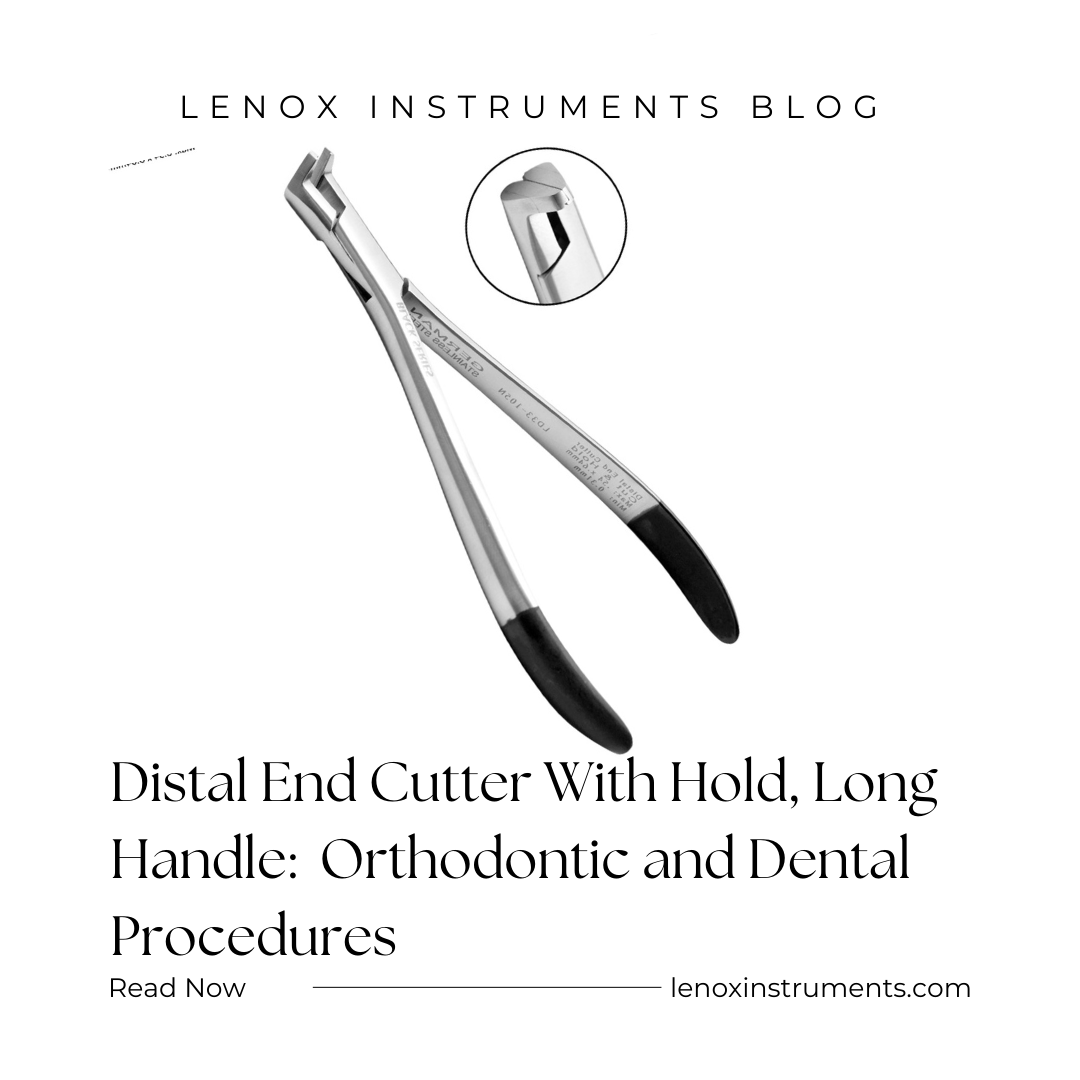
The Distal End Cutter With Hold, Long Handle is a specialized dental instrument that plays a crucial role in orthodontic treatments and various dental procedures. This versatile tool combines the precision of a distal end cutter with the added benefits of a hold feature and an extended handle, making it an indispensable asset in any dental professional‘s toolkit.Key Features and Design
- Distal End Cutting Design:
The primary function of this instrument is its ability to make precise cuts at the distal end of orthodontic wires. The cutting edges are engineered to provide clean, flush cuts that minimize patient discomfort and reduce the risk of soft tissue irritati - Hold Feature:
One of the unique aspects of this tool is its hold feature, which allows the practitioner to securely grip the cut wire end. This prevents the cut piece from falling into the patient’s mouth or becoming a projectile, enhancing safety during procedur - Long Handle:
The extended handle design offers several advantag- Improved Leverage: Allows for easier cutting of thicker gauge wires.
- Enhanced Control: Provides better maneuverability, especially in posterior regions of the mouth.
- Reduced Hand Fatigue: The longer handle distributes force more efficiently, reducing strain during extended use.
- High-Quality Materials:
Made of German Stainless steel, these instruments offer durability, corrosion resistance, and the ability to withstand repeated sterilization cycl - Ergonomic Design:
The handle is often designed with ergonomic considerations, featuring contours or textured surfaces to improve grip and reduce hand fatigue during prolonged u
Orthodontics Cutters
Applications in Orthodontics and Dentistry
- Wire Cutting in Orthodontics:
The primary application of the distal end cutter is in orthodontic wire trimming. It’s used to cut excess wire after archwire placement or adjustments, ensuring a flush cut that won’t irritate the patient’s cheeks or gums. - Ligature Cutting:
In addition to archwires, these cutters can be used to trim excess material from elastic or wire ligatures used to secure orthodontic brackets. - Appliance Adjustments:
For removable appliances or retainers, the distal end cutter can be used to make minor adjustments to wire components. - Plaque and Tartar Removal:
While not its primary function, the precise tips of the distal end cutter can serve as a plaque remover for teeth in certain situations. When used by a skilled professional, it can act as a dental tartar remover, especially around orthodontic appliances where traditional scaling instruments might be challenging to use. - Hard Plaque Removal:
In cases of severe calculus buildup, particularly around brackets and wires, this tool can function as a hard plaque remover. Its ability to access tight spaces makes it useful for dislodging stubborn deposits that might be difficult to reach with standard dental instruments.
Proper Use and TechniqueTo maximize the effectiveness and longevity of the Distal End Cutter With Hold, Long Handle, proper technique is essential:
- Wire Cutting:
- Position the cutter perpendicular to the wire for a clean cut.
- Use the tip of the cutter for precision cuts in tight spaces.
- Apply steady, controlled pressure to avoid wire distortion or damage to nearby structures.
- Using the Hold Feature:
- Engage the hold mechanism after making the cut to secure the trimmed wire end.
- Carefully remove the cut piece, ensuring it doesn’t fall into the patient’s mouth.
- Plaque and Tartar Removal:
- Use gentle, controlled movements when employing the cutter for plaque or tartar removal.
- Avoid applying excessive force, which could damage tooth enamel or soft tissues.
- Always use in conjunction with proper dental hygiene techniques and not as a replacement for traditional scaling methods.
Lenox Othodontics Cutters
Maintenance and CareProper maintenance is crucial for ensuring the longevity and optimal performance of the Distal End Cutter With Hold, Long Handle:
- Cleaning:
- Clean the instrument thoroughly after each use, removing any debris or biological material.
- Use appropriate cleaning solutions and brushes to clean hard-to-reach areas, especially around the cutting edges and hold mechanism.
- Sterilization:
- Follow proper sterilization protocols, typically involving autoclave sterilization.
- Ensure the instrument is completely dry before storage to prevent corrosion.
- Inspection:
- Regularly inspect the cutting edges for signs of wear or damage.
- Check the hold mechanism to ensure it’s functioning correctly.
- Examine the handle for any cracks or damage that could compromise its integrity.
- Sharpening:
- Periodically sharpen the cutting edges to maintain optimal performance.
- Use appropriate sharpening tools and techniques to preserve the instrument’s geometry.
- Storage:
- Store in a clean, dry environment to prevent corrosion and damage.
- Consider using instrument cassettes or organizers to protect the cutting edges during storage and transport.
Advantages in Dental PracticeThe Distal End Cutter With Hold, Long Handle offers several advantages in dental and orthodontic practice:
- Precision:
The fine cutting edges allow for extremely accurate wire trimming, essential for patient comfort and treatment efficacy. - Versatility:
While primarily designed for wire cutting, its potential use as a plaque remover for teeth and a dental tartar remover in certain situations adds to its versatility. - Safety:
The hold feature significantly enhances safety by preventing cut wire pieces from becoming loose in the patient’s mouth. - Efficiency:
The long handle design allows for quick and efficient wire cutting, potentially reducing chair time for adjustments. - Ergonomics:
The extended handle and ergonomic design contribute to reduced hand fatigue during lengthy procedures.
Considerations and LimitationsWhile the Distal End Cutter With Hold, Long Handle is a valuable instrument, it’s important to consider its limitations:
- Specialized Use:
Its primary design is for orthodontic wire cutting, and its use as a plaque or tartar remover should be limited and performed only by skilled professionals. - Learning Curve:
Proper use of the hold feature and achieving clean cuts may require practice, especially for new practitioners. - Maintenance Requirements:
Regular cleaning, sterilization, and maintenance are crucial for optimal performance and longevity. - Cost:
High-quality distal end cutters with advanced features like the hold mechanism may be more expensive than basic wire cutters.
ConclusionThe Distal End Cutter With Hold, Long Handle is a sophisticated instrument that combines precision cutting capabilities with enhanced safety features and ergonomic design. Its primary role in orthodontic wire trimming is complemented by its potential utility in plaque and tartar removal in specific clinical situations.While it serves as an effective plaque remover for teeth and a dental tartar remover in the hands of skilled professionals, it’s crucial to emphasize that its use for these purposes should be limited to clinical settings. Patients should continue to rely on proper oral hygiene practices and regular dental cleanings for managing plaque and tartar buildup.For dental professionals, mastering the use of this instrument can significantly enhance the efficiency and quality of orthodontic treatments. Its ability to make precise cuts, securely hold trimmed wire ends, and potentially assist in hard plaque removal makes it a valuable asset in modern dental practice.As with all dental instruments, proper technique, regular maintenance, and adherence to safety protocols are essential for maximizing the benefits of the Distal End Cutter With Hold, Long Handle. By understanding its features, applications, and proper care, dental professionals can leverage this tool to improve patient outcomes and streamline orthodontic procedures.


